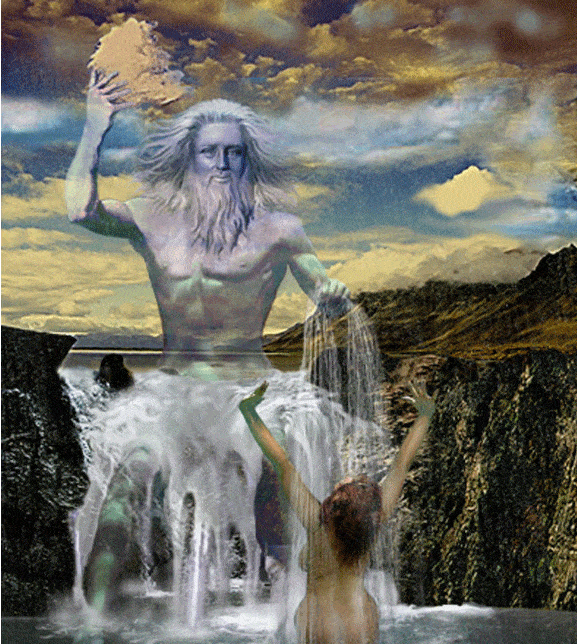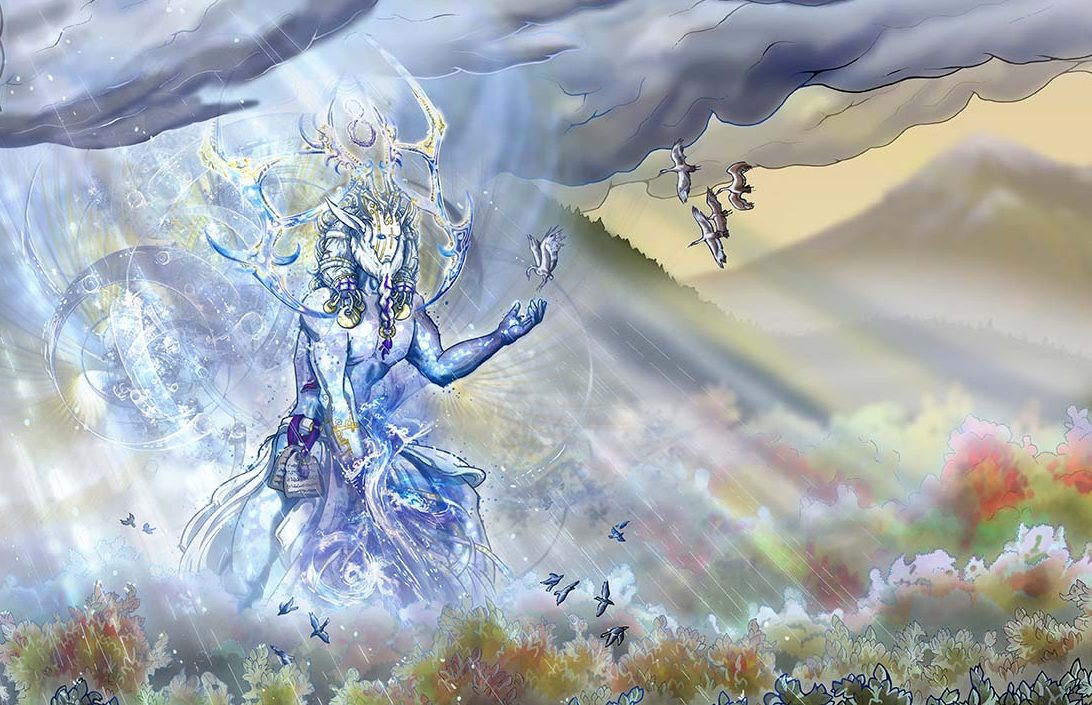[dropcap]T[/dropcap]he Amazigh culture is characterized by its richness and diversity at several levels, mainly: customs, stories, and myths. The purpose of this article is to highlight some of these myths immortalized by the Amazigh imagination and added to the traditional thought of North Africa. Therefore, Tamazgha formed a civilizational space, a cultural cradle in which major classical civilizations and myths coalesced, which contributed to the development of Amazigh mythology, Among them:
“Anzar”, Amazigh god’s of rain
In the ancient Morocco and North Africa, Amazigh tribes believed in the existence of several deities, including Anzar. The legend says that how the Anzar fell in love with a beautiful woman who had become his fiancée.
Like the ancient Greeks or Egyptian, the pre-Islamic period of Morocco also had its own mythology, gods, and its rituals.
[ads1]
This weather which promises to be rainy in several regions of Morocco and this important period for agriculture recalls the Amazigh God Anzar, one of the powerful figures venerated by Amazigh society several centuries ago.
Anzar is a beneficial element which reinforces the vegetation and ensures the growth of the herd, Anzar is a sign of fertility and productivity. This is how the ‘’Amazigh God’’ imagined the story.
Anzar and his beautiful fiancée.
According to this legend, Anzar came to marry a beautiful young girl . Then, because of their union, the river flowed again and the greenery covered the earth. The myth tells us that Anzar fell in love with a woman and wanted her to become his fiancee. “She used to swim in a river with silvery reflections. When Anzar came down to earth and approached her, she fled and Anzar withdrew.

This rejection of Anzar have made him angry, which would have ended up affecting the herds, the river and the essential resources for the survival of the Amazigh tribes. But Anzar would not have given up hope of seducing the woman he most wanted. And he was threatening them to lock up water and rain.
Out of desperation and fear for her people, the girl began to cry and call for Anzar. The latter suddenly appeared “under the aspect of an immense lightning. He hugged the young girl: the river began to flow again and the whole earth was covered with greenery.
With this romantic and supernatural ending, Anzar’s story comes to an end, giving rise to an ancient ritual. And some Amazigh tribes call for rain by using some rituals like the ritual of “talghnja”

The ritual is called (tasslit n unzar) which means “the bride of Anzar”or “talghenja”
This practice is based on preparing the bride accompany her to the doors of the sanctuary with women standing on the threshold and throw water for her, prepare a communion meal near the sanctuary, after having undress the bride, go around the sanctuary singing for the rain and for Anzar.
[ads1]
The current doll is only a symbol to replace the real bride offered to Anzar .
The practice itself describes how the Amazighs were attached to nature and how their rituals were only an explanation of the behavior of nature around them. For the researcher, Anzar ritual is one of these explanations, put in place to restore balance and explain a simple phenomenon, namely drought.
Hammou Ounamir
Hammou Ounamir is common story that brings Amazigh in one. There are different versions depending on the region, but the structure and narrative content remain common with a few details. This old myth tells the story of a young boy, Hammou Ounamir. The only child, who lives alone with his mother. Angels set their sights on this young boy of extraordinary beauty. These celestial creatures, female figures, visit him at night and coat his hand with henna during his sleep. Upon awakening, Hammou Ounamir goes to the Koranic school. The fqih catches his henna tattoo and punishes him for entering a sacred place with this tattoo of henna.
[ads1]
One day, Hammou Ounamir succeeds because of a ruse to capture one of these nocturnal creatures. The angel woman accepts to marry Hammou, but he must not reveal her presence to anyone, not even to his mother. But one day, hammou violates the forbidden space. The celestial being puts an end to his terrestrial stay and rejoins the heavens. Before that, she enjoins her husband to join her in seventh heaven.
Hammou Oumanir sets out to find him, riding an eagle. He finds his beloved who sets a new condition for their happiness: Hammou Oumanir will never have to lift the cover that marks the border between heaven and the world below. One day, he disobeys and sees his lamented mother on earth, who has become blind from mourning the disappearance of her son. She’s alone on Eid, holding her ram, without anyone to perform the ritual sacrifice. Hammou Oumanir soars from the sky, metamorphosed into a shower of blood. A drop of his blood gives sight to his mother, another hits the ram and slaughters it.
[ads1]
The story of Hammou Ounamir is a parable on the human quest for purity, beauty and love that we do not find here below, but in heaven.
The Graveyard mare (taserdount nisemsal)
It is a scary creature related to Graveyard in Morocco we call it “taserdount nisemdal” and “taghyalt timqbert” in Kabyle. It is a creature that takes the form of a nice mare that tempts people to ride her to take them to the cemetery where she devours them or bury them alive, and a beautiful woman who did not obey some mourning rituals, turned into a monster that lurks people at night.


Interesting! Have you any information about the myth of Warru?
It’s a shame we don’t cover our mythology and ancient stories more in our pop media for people to recognize thier culture.
This is very insightful article , thank you